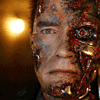
Windows 7 system freezes shortly after boot.
#1

 Posted 01 April 2013 - 08:34 PM
Posted 01 April 2013 - 08:34 PM

#2

 Posted 02 April 2013 - 02:46 PM
Posted 02 April 2013 - 02:46 PM

We could do with some information on your computer hardware etc so can you run Speccy and post the url with your next reply http://www.piriform....file-to-the-web
#3

 Posted 02 April 2013 - 09:36 PM
Posted 02 April 2013 - 09:36 PM

#4

 Posted 04 April 2013 - 09:11 AM
Posted 04 April 2013 - 09:11 AM

Thanks for the url
Can I ask if you had made any changes or additions just before the issue started, is your video card the 512mb or 1GB version, what size is the Sony TV that the video card is connected to and has any attempt been made to overclock any of the computers hardware.
Couple of things that I note are 1: The +3.3V rail on the PSU is too low at 2.128 V (see attachment 1 below) on some MBs the +3.3V rail provides the power for the memory and the pci-e slots (see attachment 2 below) a drop in the power to the slot/s would cause the issues that you are having. 2: The video card performance needs checking at some point as the readings showing are GPU Clock: 156 MHz and Memory Clock: 300 MHz, this is below par for the card.
A quick check that you can do for us if you will please and you are ok with working inside the computer!
Research shows that your MB has an integrated video chip, if this is correct could you remove the add on video card and connect your display to the MBs video port and see how the computer behaves.
#5

 Posted 04 April 2013 - 10:30 PM
Posted 04 April 2013 - 10:30 PM

#6

 Posted 06 April 2013 - 03:19 AM
Posted 06 April 2013 - 03:19 AM

Can I ask how long you have been using the TV with the computer.
Was the computer used before this with a standard screen with no problems.
Can you try the computer with a smaller screen to see if the issue occurs.
Please run HWMonitor and provide a screenshot of the results so that we have a comparison to Speccy http://www.cpuid.com.../hwmonitor.html
#7

 Posted 07 April 2013 - 12:01 AM
Posted 07 April 2013 - 12:01 AM

 Untitled2.bmp 1.48MB
234 downloads
Untitled2.bmp 1.48MB
234 downloads
#8

 Posted 07 April 2013 - 03:28 AM
Posted 07 April 2013 - 03:28 AM

The HWMonitor screenshot also shows the +3.3V as being too low so swapping in a known good PSU for testing at least should be done if possible, other than this the other test you can do yourself is physically testing the Ram, please see my canned text below;
How to physically test your Ram.
The following checks require the computer case to be opened so take the following safety precautions 1st, disconnect the power cord from the wall socket and take anti static precautions before touching anything inside, you can do this by touching a bare metal part of the case.
Have a pencil and notepad to hand.
Remove each stick of Ram and blow out the memory slots.
Insert the first stick of Ram in memory slot one, reconnect the power and in the case of a desktop computer the video to screen cable.
Power up the computer and see how it goes.
Make a note of the results.
Repeat the procedure until the first stick of Ram has been tested in each memory slot and the results written down.
Remove the first stick of Ram and put it to one side on top of a piece of paper with the number one on it for identification purposes.
Repeat the procedure with all Ram until each stick has been tested in all slots, the results written down and the sticks identified numerically.
Please note that some MBs (motherboards) will not boot unless there is Ram in slot oneso please provide us with your motherboard details, brand, model name/number and any revision number, these details may be found by the CPU, between the PCI slots and/or around the edge of the motherboard, once we have the MB details we can look for the user manual.
#9

 Posted 10 April 2013 - 04:54 PM
Posted 10 April 2013 - 04:54 PM

#10

 Posted 11 April 2013 - 09:30 AM
Posted 11 April 2013 - 09:30 AM

Similar Topics
0 user(s) are reading this topic
0 members, 0 guests, 0 anonymous users
As Featured On:














 Sign In
Sign In Create Account
Create Account

